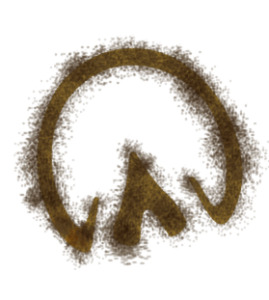Hay everyone!
It looks like we’re nearing the end of the summer! I can’t believe that it’s already time for my yearly “back to school” blog. I’m sure many of you have spent lots of time outside this summer enjoying the warm weather, hopefully with both your horse and human friends. Even though it’s great to see all your classmates and teachers again this school year, being inside means that it’s a bit easier for everyone to get sick. The same is certainly true for horses! That’s why today I’ll be sharing a bit about contagious respiratory diseases.
Just like people, horses can get ill from germs that are “contagious.” This means that the viruses or bacteria that cause the illness can be passed from animal to animal. There’s a lot of different ways this can happen, including through the air or on surfaces. Respiratory diseases in particular can impact different parts of the respiratory tract like the nose, sinuses, and lungs. An infection can affect just one of these, or the whole organ system can get sick. Ouch! Today, we’ll be talking about some of the ways to recognize when your horse might be sick.
The many different types of equine respiratory diseases typically present with the same clinical signs at first. (A clinical sign is an observation that indicates there is a disease, injury, or other medical condition present.) This makes it difficult to determine the exact cause during initial examination, and laboratory tests are often needed. Horse owners often notice that their horse is coughing, has nasal discharge, and is reluctant to do their normal activities. This is what usually spurs them to call their veterinarian. Whenever I got sick, I’m glad Dr. M called the vet right away to get me treated as soon as possible! Some horses might show only a few of those signs, so it’s important to watch out for others. These include fever, loss of appetite, and sluggishness. Think about when you feel sick: what kind of symptoms do you experience? It’s also important to remember that these signs can occur intermittently, especially fevers, so be sure to keep a close eye on your horse if you suspect anything.
Let’s chat a bit more about fevers. The normal body temperature for horses ranges from 99.5°F to 101.5°F (37.5°C to 38.5°C). This is why it’s important to know your horse’s normal temperature when they are healthy. Try taking your horse’s temperature at a few different times of day while they are at rest, and then calculate the average. If you think that your horse may be sick, you can always take their temperature and compare it to their normal. Remember, you should always be using a rectal thermometer to accurately check body temperature! If your horse has a temperature above 102°F (38.9°C), you should probably rest the horse and regularly monitor their temperature at different times of day. It would also be a good idea to write down the date and time for each temperature. If there is a problem, you and your veterinarian can always refer back to your log to see how the body temperature changed. Call your veterinarian if the horse’s temperature reaches 103°F (39.4°C).
This is only scratching the surface when it comes to equine diseases. There are scientists who dedicate their whole lives to studying infections in horses! Maybe you can be the researcher who makes groundbreaking discoveries in immunology. Happy learning!
Until next time.
Your friend,

Lord Nelson
